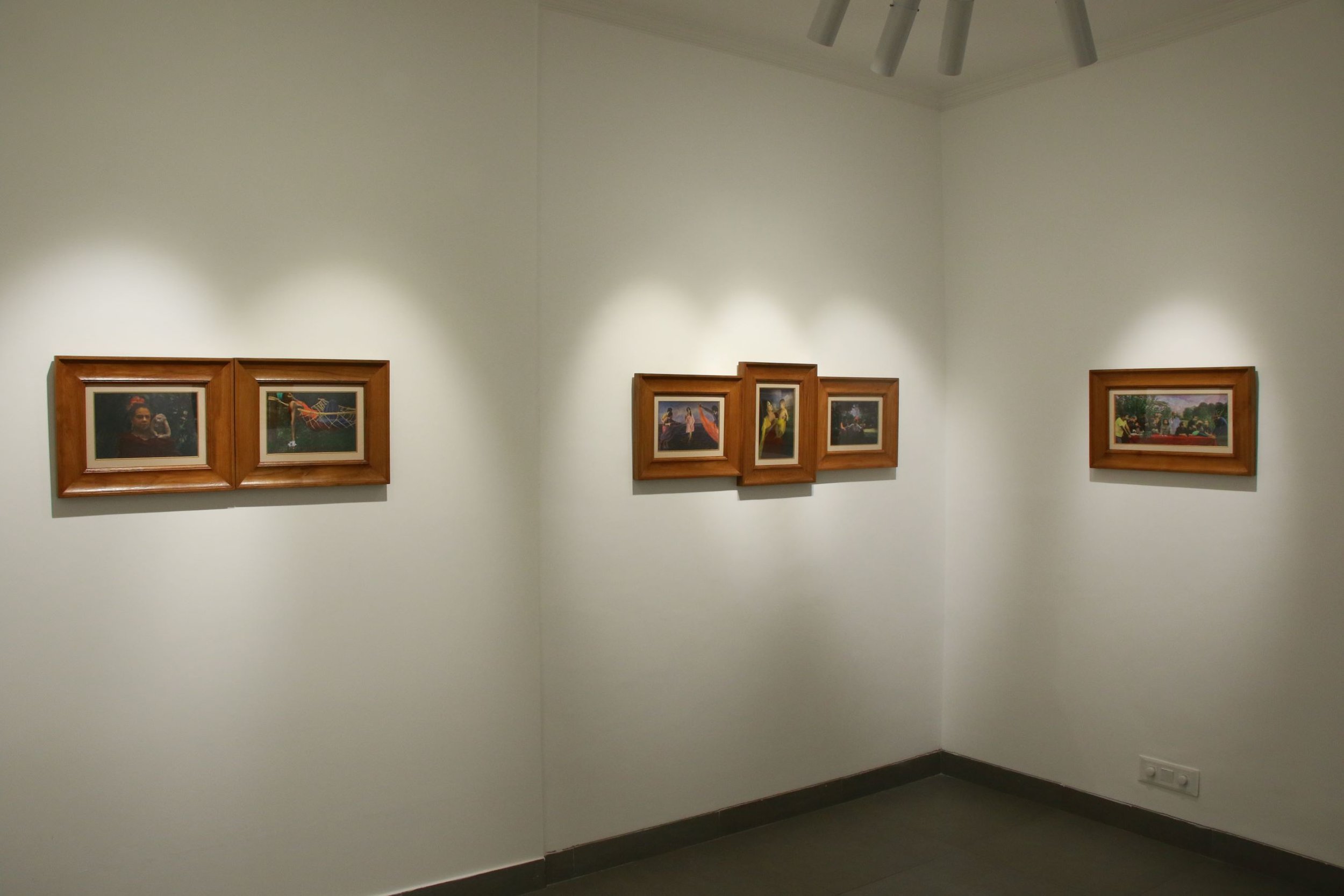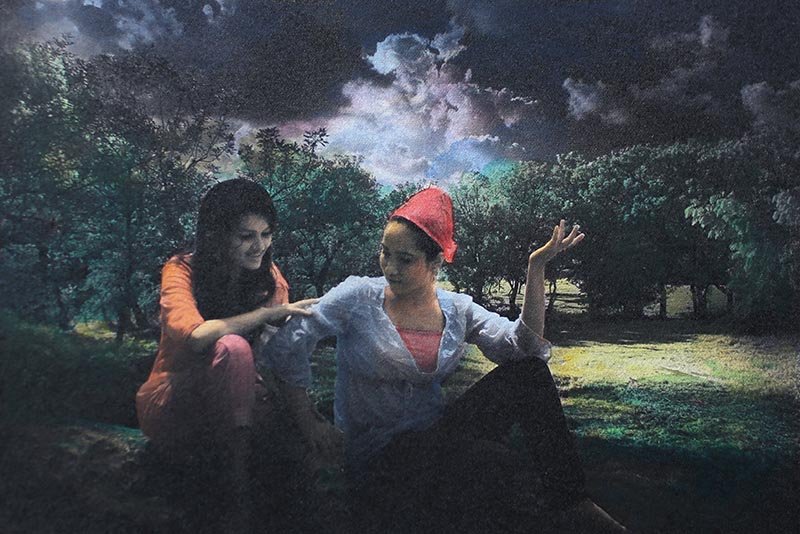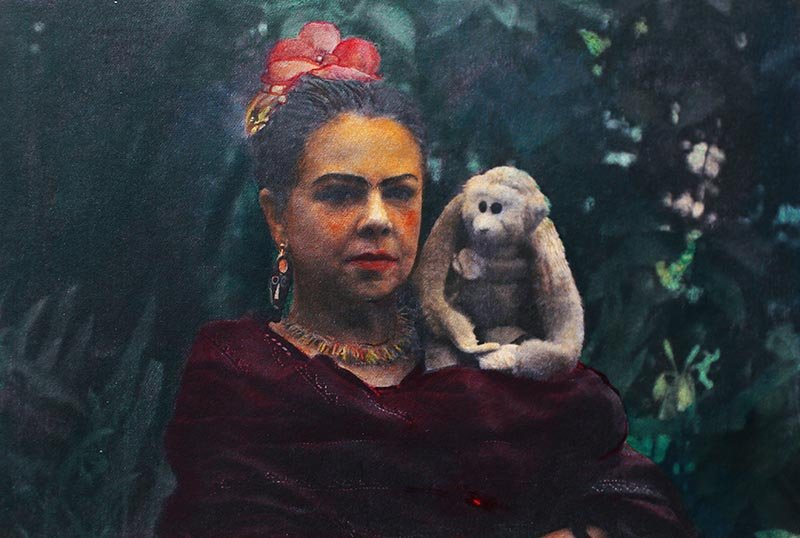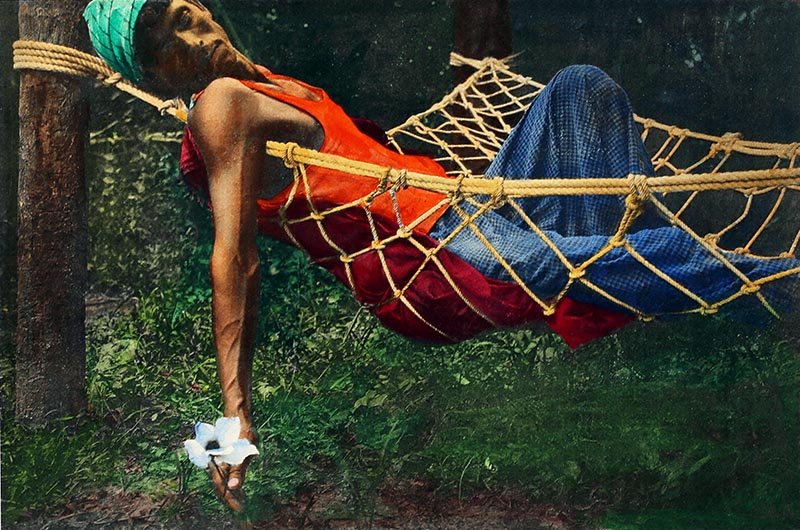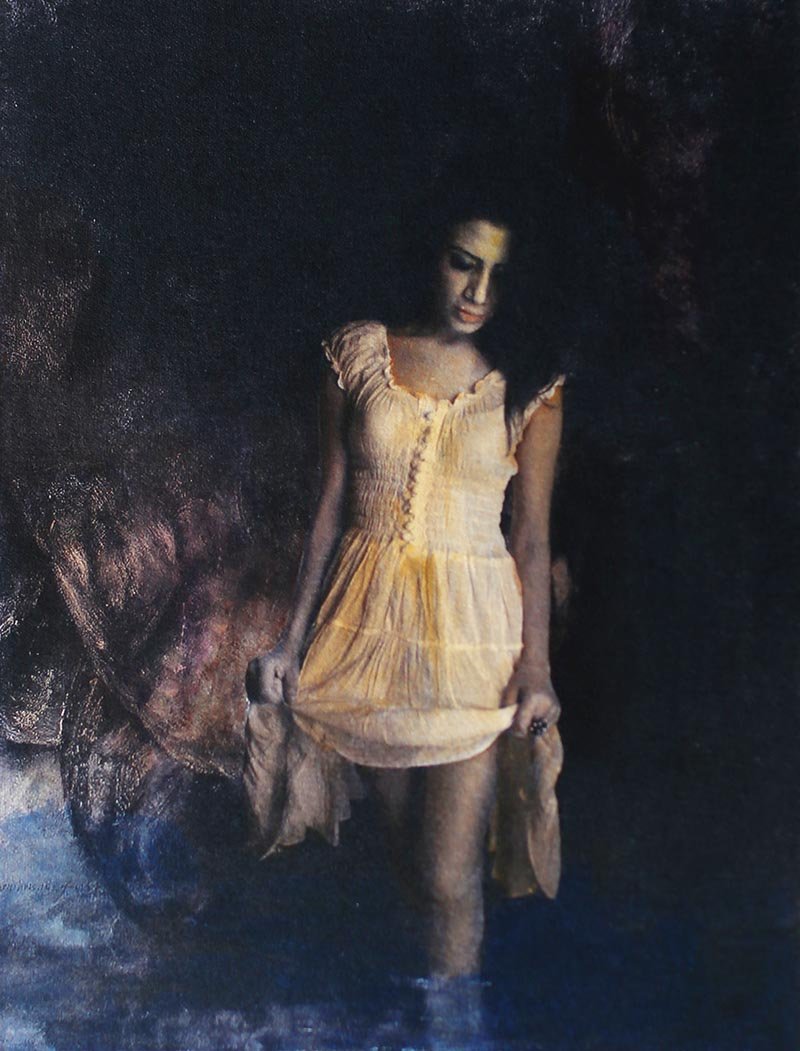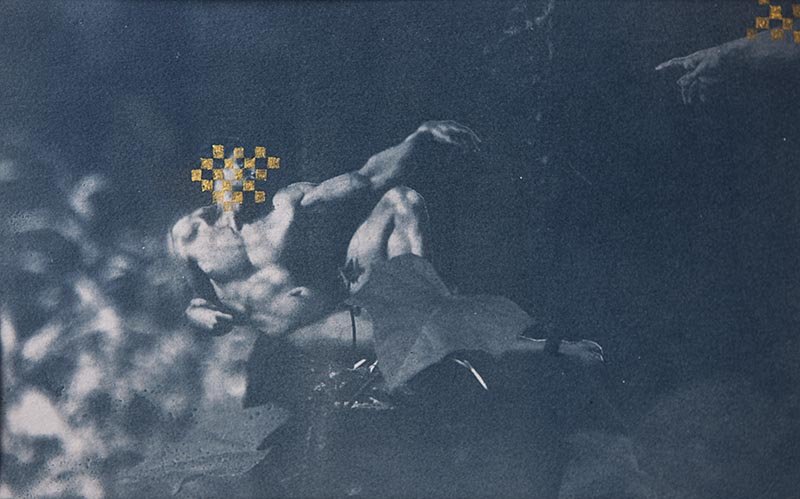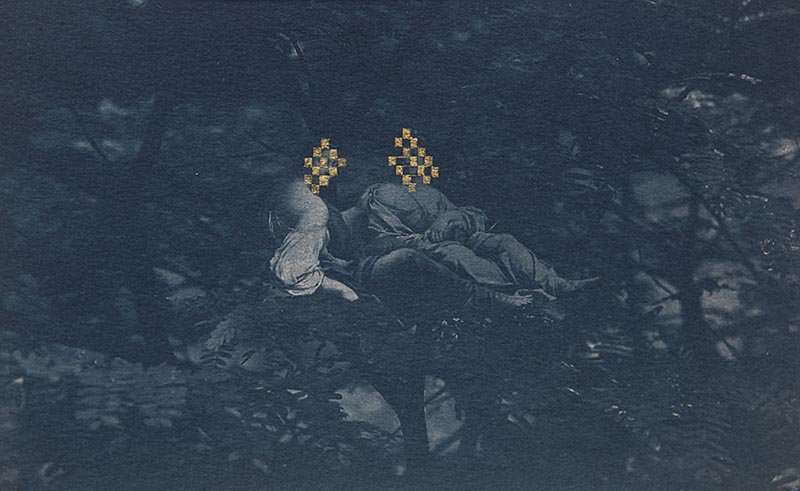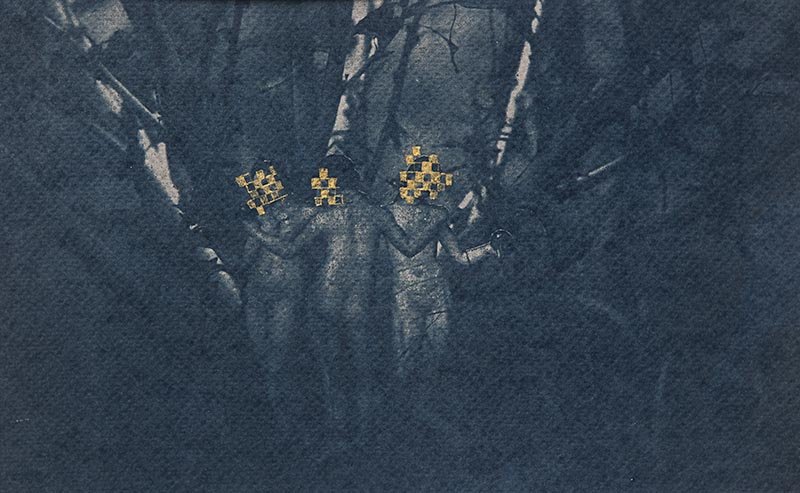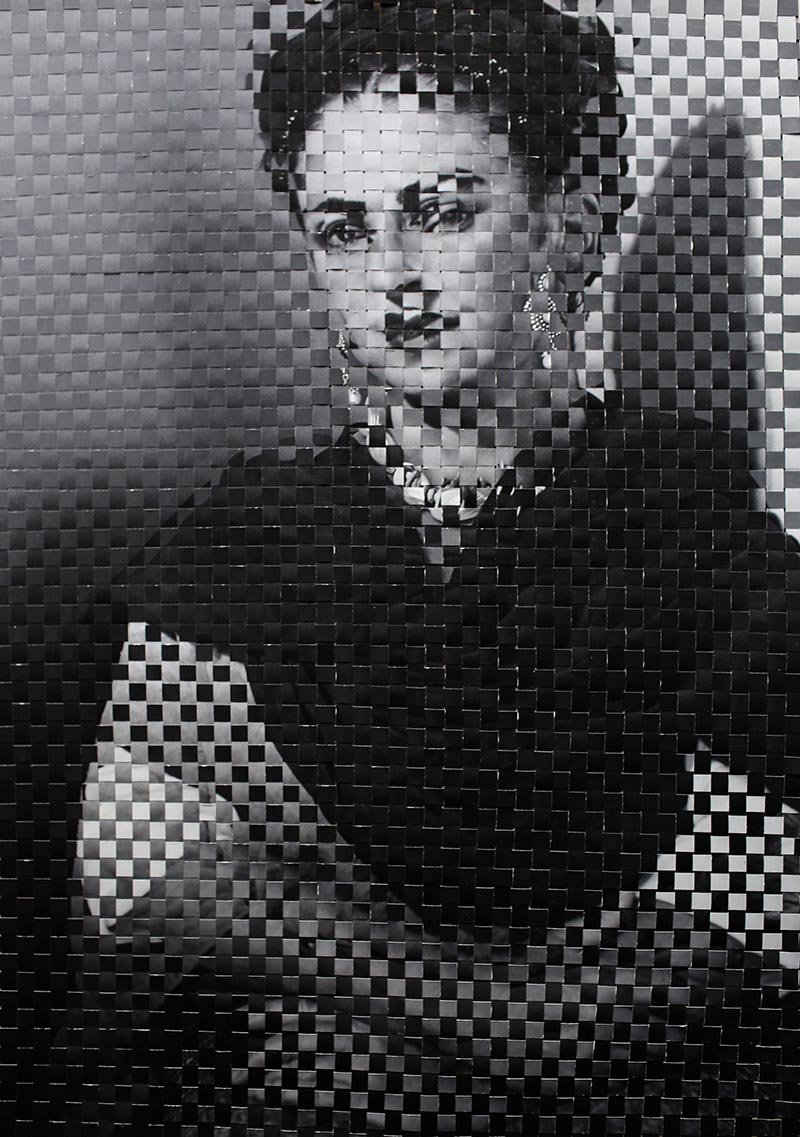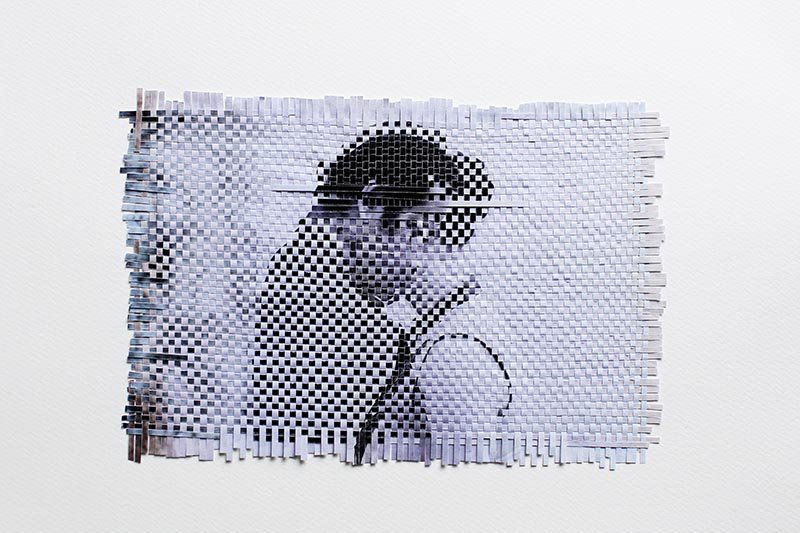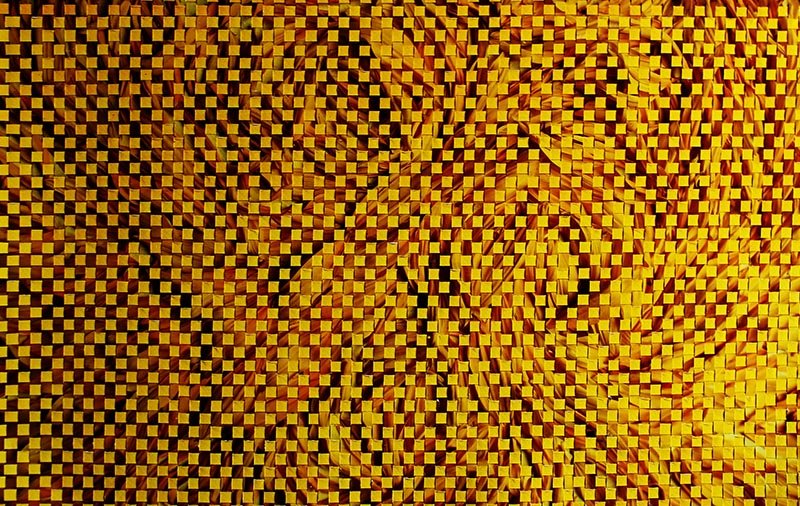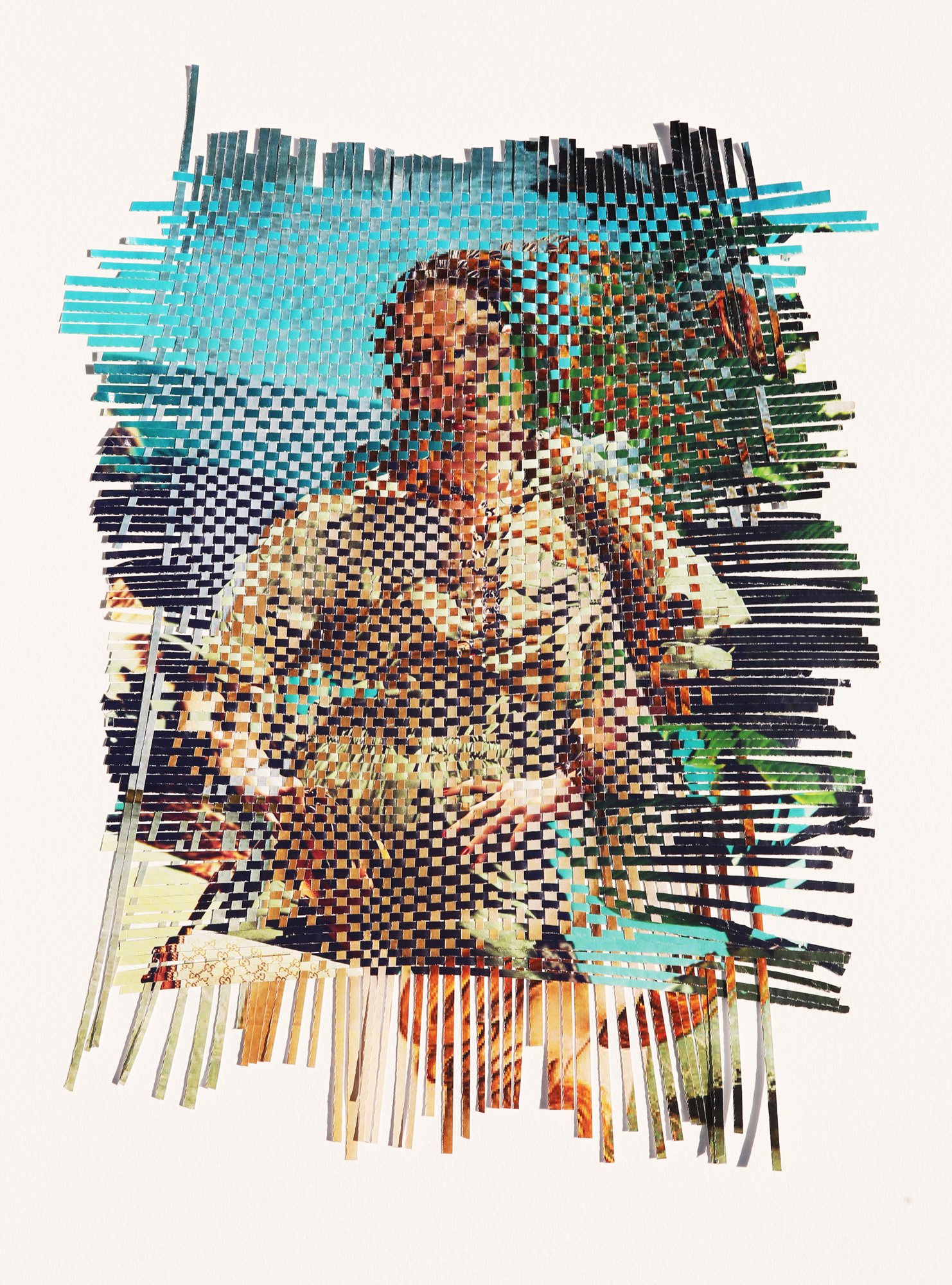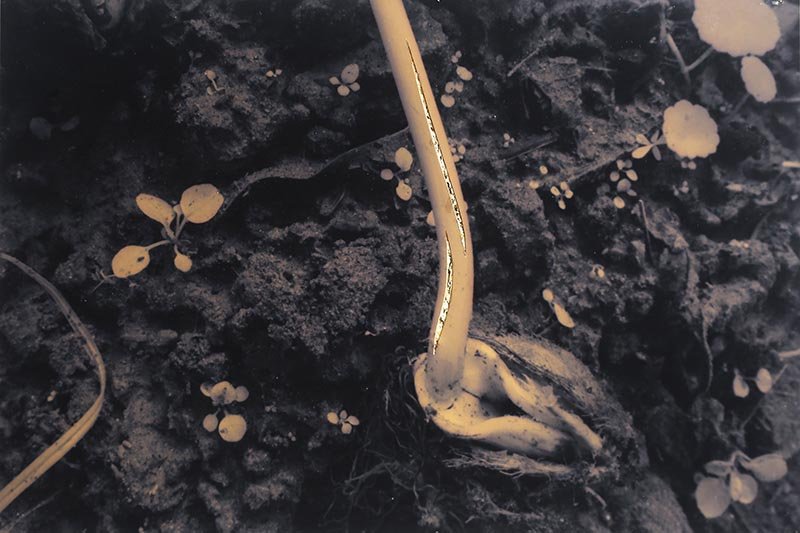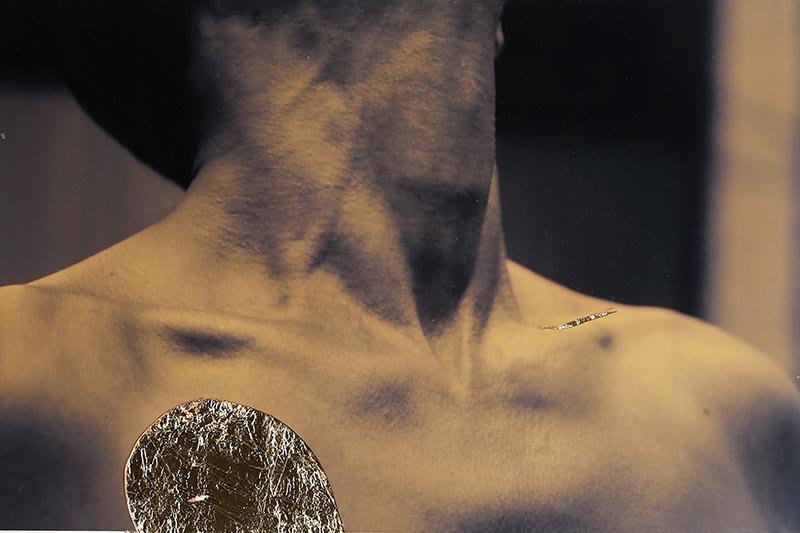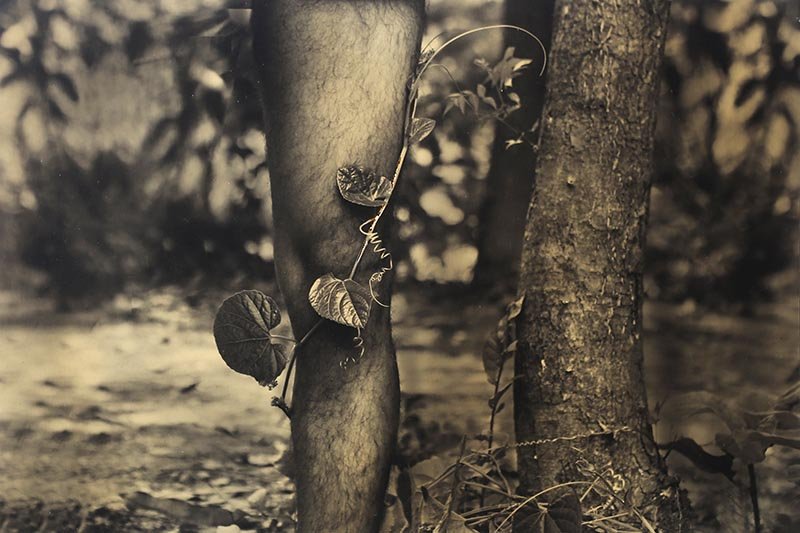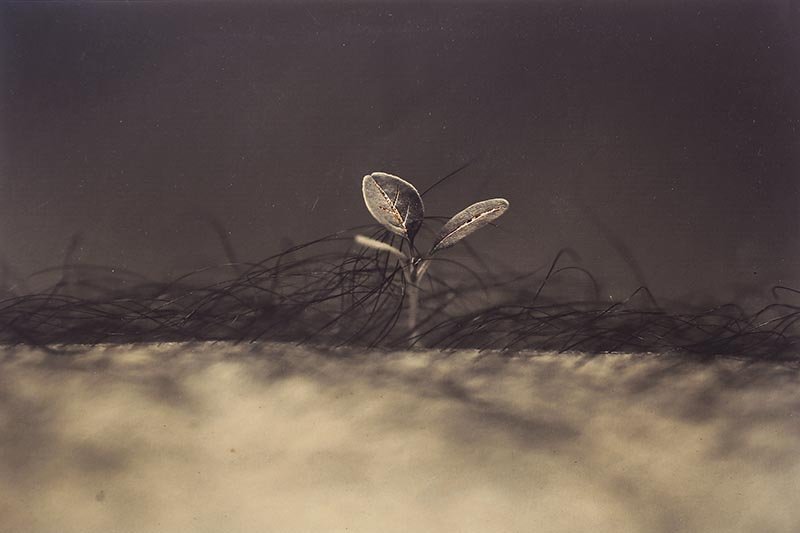
In a Realm of Ambivalence by Manir Mrittik
September 25, 2018 – October 20, 2018 at Akar Prakar, Delhi
Manir Mrittik’s photographic work is rooted in paradoxes. His images subvert the apparent certitude offered by the medium, to manipulate our sense of reality. His interventions may take different guises, but Mrittik invariably reaches the same conclusion: there is more to what we perceive. Images, just as our assumptions about it, are ambivalent.
The artist stands apart in the landscape of contemporary photography in his country. Initially trained as a painter, Mrittik has never been interested in using photography to document reality. The printed image is the point of departure rather than the conclusion of his artistic process. Using the medium as a platform on which to intervene and elaborate, he systematically augments his images with a palette of specific interventions: coloring, painting, embossing, cutting, digital retouching and, perhaps most distinctively, weaving. If weaved photography is nothing new – owing to Chuck Close’s famously weaved photographic portraits. However, it is Mrittik’s use of the technique that requires scrutiny.
His Alternative Masterpieces are a case in point. The eye surfs on these ubiquitous works from the Western canon – da Vinci’s Mona Lisa, Vermeer’s Girl with a pearl earring – and yet something catches the eye. The pixelation resulting from the weaving brings uncertainty. It is Mona Lisa but not quite, and whose is the other face in there? It is that of the artist, as it happens, whose superposition of the personal with the canonical, of the anonymous with the celebrated deconstructs the icon to subvert its meaning. By weaving his own traits to those of Mona Lisa, Mrittik disrupts the authority of authenticated art and its official history. The kaleidoscopic nature of his Alternative Masterpieces delineates a “realm of ambivalence” in which anyone can share Mona Lisa’s fame, in which also Mona Lisa is but a trivial icon.
There is further evidence of Mrittik’s quiet deconstruction in the Body and Nature series, in which he embosses photography with gold leaf. The images hint at the naturalist vein of early photography with their seemingly innocuous close-ups of body-parts in playful interaction with vegetal elements; a pastoral utopia of man at peace with nature. Yet further ambivalence lies behind the façade of innocence. A masculine torso is decorated with circles of gold, plants playfully swirl around a human calf and a whole set of assumptions about our bodies and their designated place vis-à-vis gender, nature and power are suddenly called into question. The series’ linear fluidity whispers of new possibilities in inhabiting our world and bodies.
Is Mrittik advocating just another subjective deconstruction, then? Not quite, or not only. It is relevant here to know where the artist speaks from. Based in Bangladesh, Mrittik is not concerned with mainstream narratives and dominant histories. He operates from the margins, a position which he uses to question artistic canons and re-balance aesthetic hierarchies. Standing at the periphery, he muses over what is and what could be. There is no certitude here, no definitive paradigm; the artist’s doubts and suggestions are as fragile as the paper he painstakingly weaves and embosses. But to hear of them is to accept the ambivalence of our reality.
Manir Mrittik | Raptures in time & space - Edition 1/5 | Hand-painted photographic print | 6.75 x 10 in | 2018
Manir Mrittik | Raptures in time & space - Edition 1/5 | Hand-painted photographic print | 7 x 16.75 in | 2018
Manir Mrittik | Raptures in time & space - Edition 1/5 | Hand-painted photographic print | 6.75 x 10 in | 2018
Manir Mrittik | Raptures in time & space - Edition 1/5 | Hand-painted photographic print | 10 x 6.75 in | 2018
Manir Mrittik | Raptures in time & space - Edition 1/5 | Hand-painted photographic print | 6.75 x 10 in | 2018
Manir Mrittik | Raptures in time & space - Edition 1/5 | Hand-painted photographic print | 10 x 6.75 in | 2018
Manir Mrittik | Raptures in time & space - Edition 1/5 | Hand-painted photographic print | 6.75 x 10 in | 2018
Manir Mrittik | Raptures in time & space - Edition 1/5 | Hand-painted photographic print | 10 x 7 in | 2018
Manir Mrittik | Raptures in time & space - Edition 1/5 | Hand-painted photographic print | 10 x 7.75 in | 2018
Manir Mrittik | Raptures in time & space - Edition 1/5 | Hand-painted photographic print | 10 x 6.75 in | 2018
Manir Mrittik | Raptures in time & space - Edition 1/5 | Hand-painted photographic print | 6.5 x 10 in | 2018
Manir Mrittik | Raptures in time & space - Edition 1/5 | Hand-painted photographic print | 6.5 x 10 in | 2018
Manir Mrittik | Raptures in time & space - Edition 1/5 | Hand-painted photographic print | 6.5 x 10 in | 2018
Manir Mrittik | Raptures in time & space - Edition 1/5 | Hand-painted photographic print | 6.5 x 10 in | 2018
Manir Mrittik | Raptures in time & space - Edition 1/5 | Hand-painted photographic print | 6.5 x 10 in | 2018
Manir Mrittik | Raptures in time & space - Edition 1/5 | Hand-painted photographic print | 6.5 x 10 in | 2018
Manir Mrittik | Raptures in time & space - Edition 1/5 | Hand-painted photographic print | 6.5 x 10 in | 2018
Manir Mrittik | Raptures in time & space - Edition 1/5 | Hand-painted photographic print | 6.5 x 10 in | 2018
Manir Mrittik | Alternative masterpieces - Edition 1/5 | Photo tapestry | 39 x 27 in | 2018
Manir Mrittik | Alternative masterpieces - Edition 2/5 | Photo tapestry | 39 x 27 in | 2018
Manir Mrittik | Alternative masterpieces - Edition 2/5 | Photo tapestry | 39 x 27 in | 2018
Manir Mrittik | Alternative masterpieces - Edition 1/5 | Photo tapestry | 49.5 x 37.5 in | 2018
Manir Mrittik | The lovers redux - Edition 2/3 | Photo tapestry | 11.5 x 15.5 in | 2018
Manir Mrittik | The lovers redux - Edition 2/3 | Photo tapestry | 11.5 x 15.5 in | 2018
Manir Mrittik | The lovers redux - Edition 2/3 | Photo tapestry | 11.5 x 15.5 in | 2018
Manir Mrittik | The lovers redux - Edition 2/3 | Photo tapestry | 11.5 x 15.5 in | 2018
Manir Mrittik | The lovers redux - Edition 2/3 | Photo tapestry | 11.5 x 15.5 in | 2018
Manir Mrittik | The sunflower is also mine, in a way - Edition 1/5 | Photo tapestry | 11 x 17 in | 2018
Manir Mrittik | The sunflower is also mine, in a way - Edition 1/5 | Photo tapestry | 19 x 14.5in | 2018
Manir Mrittik | The sunflower is also mine, in a way - Edition 1/5 | Photo tapestry | 32 x 22in | 2018
Manir Mrittik | The sunflower is also mine, in a way - Edition 1/5 | Photo tapestry | 39 x 27in | 2018
Manir Mrittik | The sunflower is also mine, in a way - Edition 1/5 | Photo tapestry | 16 x 22 in | 2018
Manir Mrittik | The sunflower is also mine, in a way - Edition 1/3 | Photo tapestry | 39 x 27 in | 2018
Manir Mrittik | Venus shattered - Edition 2/3 | Photo tapestry | 15.5 x 11.5 in | 2018
Manir Mrittik | Venus shattered - Edition 1/3 | Photo tapestry | 15.5 x 11.5 in | 2018
Manir Mrittik | Venus shattered - Edition 1/3 | Photo tapestry | 15.5 x 11.5 in | 2018
Manir Mrittik | Natural vessels - Edition 1/5 | Photo print & gold leaf | 8 x 12 in | 2018
Manir Mrittik | Natural vessels - Edition 1/5 | Photo print & gold leaf | 8 x 12 in | 2018
Manir Mrittik | Natural vessels - Edition 1/5 | Photo print & gold leaf | 8 x 12 in | 2018
Manir Mrittik | Natural vessels - Edition 1/5 | Photo print & gold leaf | 8 x 12 in | 2018
Manir Mrittik | Natural vessels - Edition 1/5 | Photo print & gold leaf | 8 x 12 in | 2018
Manir Mrittik | Natural vessels - Edition 1/5 | Photo print & gold leaf | 8 x 12 in | 2018
Manir Mrittik | Natural vessels - Edition 1/5 | Photo print & gold leaf | 8 x 12 in | 2018
Manir Mrittik | Natural vessels - Edition 1/5 | Photo print & gold leaf | 8 x 12 in | 2018
Manir Mrittik | Natural vessels - Edition 1/5 | Photo print & gold leaf | 8 x 12 in | 2018
Manir Mrittik | Natural vessels - Edition 1/5 | Photo print & gold leaf | 8 x 12 in | 2018
Manir Mrittik | Natural vessels - Edition 1/5 | Photo print & gold leaf | 8 x 12 in | 2018
Manir Mrittik | Natural vessels - Edition 1/5 | Photo print & gold leaf | 8 x 12 in | 2018
Manir Mrittik | Natural vessels - Edition 1/5 | Photo print & gold leaf | 8 x 12 in | 2018
Manir Mrittik | Natural vessels - Edition 1/5 | Photo print & gold leaf | 8 x 12 in | 2018
Manir Mrittik | Natural vessels - Edition 1/5 | Photo print & gold leaf | 8 x 12 in | 2018
Manir Mrittik | Natural vessels - Edition 1/5 | Photo print & gold leaf | 8 x 12 in | 2018
Manir Mrittik | Natural vessels - Edition 1/5 | Photo print & gold leaf | 8 x 12 in | 2018
Manir Mrittik | Natural vessels - Edition 1/5 | Photo print & gold leaf | 8 x 12 in | 2018
Manir Mrittik | Natural vessels - Edition 1/5 | Photo print & gold leaf | 8 x 12 in | 2018
Manir Mrittik | Natural vessels - Edition 1/5 | Photo print & gold leaf | 8 x 12 in | 2018
Manir Mrittik | Natural vessels - Edition 1/5 | Photo print & gold leaf | 8 x 12 in | 2018
Manir Mrittik | Natural vessels - Edition 1/5 | Photo print & gold leaf | 8 x 12 in | 2018
About Manir Mrittik
Manir Mrittik (b.1975) works across a range of medium and techniques such as photography, weaving, drawing, painting and technologies drawn from software and gaming. He formulates an original proposition through an idiosyncratic approach of photography, where the printed image is augmented by various interventions.
Mrittik’s oeuvre investigates personal memory, accepted histories and our relationship to temporality. It explores the dialectical experience of the self-vis-à-vis dominant narratives such as the Modern postulate of a universal art history. Mrittik’s self-portraits and tableaux vivants are ambivalent in nature: they stage imagined drama where the artist constantly traces new relations between his personal life, the hierarchies of the artistic tradition and the materiality of the world he lives in.



